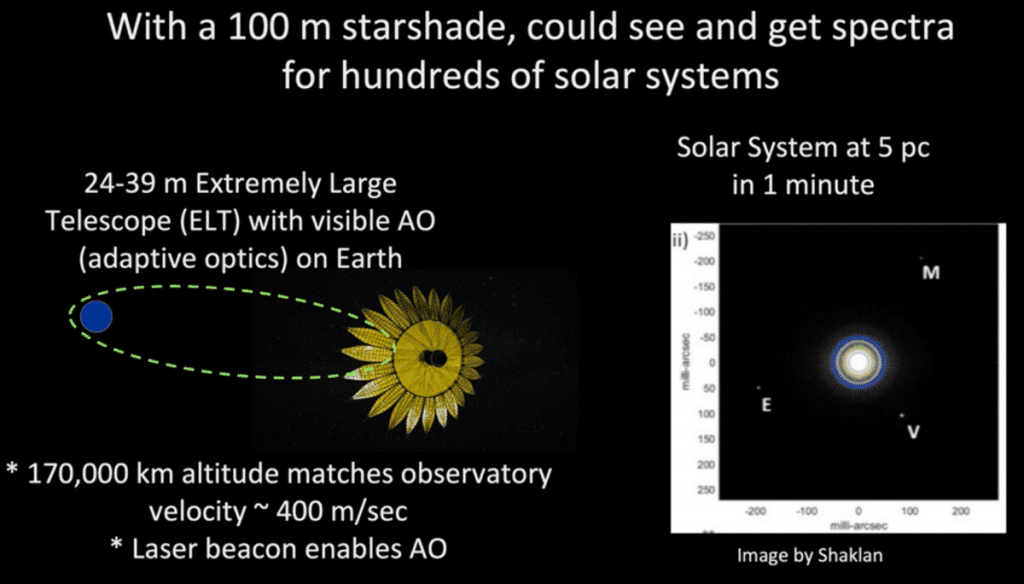NASA wants to revolutionize the search for exoplanets with its first hybrid observatory, and is now requesting design proposals for a massive screen that will be revealed in space. The so-called “star parachute” should have a diameter of 100 meters and a mass of no more than 1000 kg. In space, when unfolded, it must withstand an acceleration of 0.03 g and quickly return to its original shape. When folded, it should fit into an existing rocket or planned SpaceX spacecraft. When the concept was introduced back in February, it was said that such a massive canopy with previous designs could not be produced, so alternatives are now being sought.
View inside distant star systems
The striped screen is the main component of the Hybrid Observatory for Earth-like Exoplanets (HOEE), the feasibility of which is currently being studied by the US space agency. The concept envisions that the massive screen would be placed in Earth’s orbit in such a way that it would block the light of distant stars and that the largest planned ground-based telescopes could image potential exoplanets directly reflecting their light. In principle, this is the proven technology of the so-called conical diaphragm, only on a truly gigantic scale. The screen will be as an aperture about 170,000 kilometers from the telescope in question. From a distance of 16 light-years, Mars, Earth, and Venus can be imaged in the solar system without the sun shining on everything.
Originally, it was believed that in this way one could only photograph exoplanets near stars if the screen and telescope were in space, NASA writes. Thanks to modern adaptive optics, such as those developed by the European Southern Observatory, the largest and best telescopes on Earth can also be connected to such a screen and take such images. On Earth, the giant telescopes ELT (Extremely Large Telescope), GMT (Giant Magellan Telescope) and TMT (Thirty Meter Telescope) can take such images. Even the spectra of distant exoplanets can be generated in this way, for example to see if there is oxygen and therefore the possible existence of Earth-like life.
Recommended editorial content
External content will be uploaded here with your consent.
The search for designs to design the giant canopy continues through August 22, and there is a $3,000 prize for the best one. There are other cash prizes for places 2-5, also for participants from Germany, Austria or Switzerland. The competition is run by GrabCAD, an American startup dedicated to cloud-based work with CAD files. on the linked portal All other details are collected.
An interactive graphic is included in the article, which was created and provided by the Berlin service provider Datawrapper. To protect data in Datawrapper, see data protection. No personal or personal data is collected from interactive graphic readers.
(mo)

“Total coffee aficionado. Travel buff. Music ninja. Bacon nerd. Beeraholic.”







More Stories
Researchers detect extremely high-energy gamma rays
Anxiety disorders in old age increase the risk of dementia
Researchers are particularly fascinated by these exoplanets.